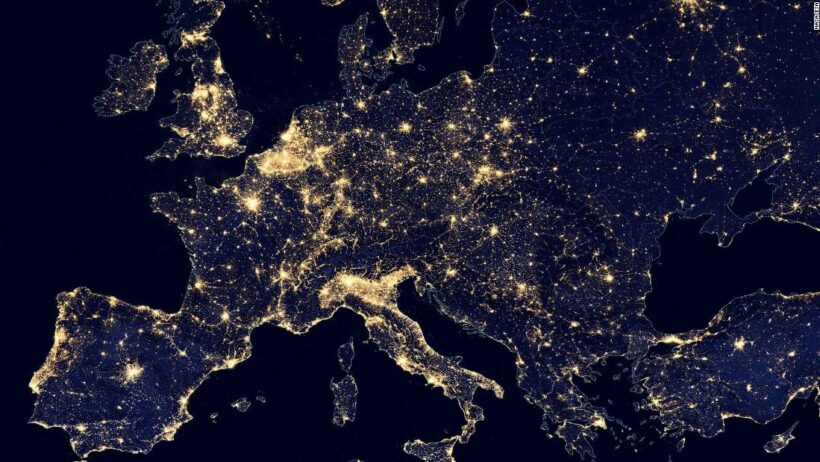In an age increasingly defined by the glow of artificial light, the implications of bright lights at night extend far beyond mere aesthetics or urban ambiance. As nocturnal illumination pervades natural habitats and urban landscapes, an intriguing intersection with climate change emerges. To unravel this complex relationship, one must consider the multifaceted aspects through which bright lights contribute not only to light pollution but potentially to global warming itself.
First, let us demystify the phenomenon of light pollution. This term encapsulates the excessive, misdirected, or obtrusive artificial light created by urbanization. Cities, brimming with energetic nightscapes, disrupt the natural rhythms of both flora and fauna. Animals, particularly nocturnal species, rely on darkness for their biological functions, including mating, foraging, and navigation. The bombardment of bright lights significantly alters these inherent behaviors, leading to ecological ramifications that surge beyond individual species, altering entire ecosystems.
But how does this play into the larger narrative of climate change? The link between bright lights and global warming can be extrapolated from several key areas of concern: energy consumption, heat generation, and ecological disruption.
One of the primary contributors of bright lights is energy consumption. Artificial lighting systems—ranging from the humble streetlamp to sprawling neon signs—necessitate substantial energy sources, predominantly fossil fuels. The burning of these fossil fuels is a significant driver of greenhouse gas emissions, which directly contribute to global warming. Current statistics suggest that approximately 20% of electricity consumed in the United States is utilized for lighting. This dependence fuels a vicious cycle: as urban populations swell, more energy is required for lighting, leading to heightened emissions.
Moreover, the technology underpinning modern lighting has undergone a seismic shift in recent years. The transition from incandescent bulbs to more energy-efficient options such as LEDs has altered the energy landscape, ostensibly decreasing overall consumption. However, this efficiency can lead to increased usage. With LED lights proliferating due to their longevity and cost savings, cities often illuminate previously dark spaces, thus expanding the footprint of light pollution. As a result, even though individual devices may consume less energy, the enhanced usage can paradoxically lead to increased total energy demands.
Next, consider the direct thermal impact of artificial light. Bright lights generate heat, inadvertently contributing to what’s known as the ‘urban heat island’ effect. Urban areas, laden with asphalt, brick, and concrete, abound in heat-absorbing materials. The surplus of nighttime illumination exacerbates these local climatic conditions, raising nighttime temperatures. Together with the heat produced during energy consumption, bright lights do not merely illuminate the darkness; they ferment an environment that fosters additional heating, further entrenching the existing climate crisis.
The ecological disturbances initiated by light pollution create a feedback loop that complicates the relationship between bright lights and climate change even further. Altered life cycles among species, disrupted migration patterns, and skewed predator-prey dynamics ripple through ecosystems as animals struggle to adapt to their artificially lit surroundings. These newly altered behaviors can lead to poor reproductive success and reduced biodiversity, which is crucial for the resilience of ecosystems. The decline in biodiversity can weaken natural systems’ capacity to sequester carbon, thereby missing an essential buffer in the fight against climate change.
In considering solutions, one must examine the potential for redesigning urban environments to mitigate light pollution. Architectural innovations that cleverly incorporate darkness as a component of urban planning may transform this longstanding issue. Strategies such as directional lighting—designed to minimize upwards or sidelong glare—and implementing “dark sky” policies can mitigate light pollution while still providing necessary illumination. Moreover, communities can adopt practices such as adopting smart lighting systems that utilize motion sensors to activate lights only when needed, significantly reducing energy consumption.
In addition, public awareness campaigns highlighting the drawbacks of excessive nocturnal lighting can lead to grassroots movements aimed at sustainable solutions. Community-based initiatives and citizen science projects can galvanize localized efforts to reduce light usage, promote educational resources, and illuminate the staggering consequences of light pollution on various ecosystems.
Ultimately, the road ahead requires a paradigm shift in how society perceives nighttime illumination. The juxtaposition of safety and environmental integrity presents itself as a critical discussion point. The allure of bright lights should not eclipse the pressing need to preserve ecological balance. Solving the dual challenges of light pollution and climate change demands innovative thinking, progressive policies, and authentic commitments from individuals and societies at large.
In conclusion, while bright lights serve a functional purpose in modern life, their contributions to global warming manifest through energy consumption, thermal pollution, and ecological disruption. Accepting the consequences of our illuminated choices is imperative in achieving a harmonious balance between urban convenience and environmental stewardship. Transitioning to a world where dark skies reclaim their prominence is not merely a nostalgic wish; it represents a commitment to foster a sustainable future. As we shift our gaze towards the night sky, we just might discover the serenity and clarity obscured by bright lights—and, fundamentally, an opportunity to redefine our relationship with the planet.






